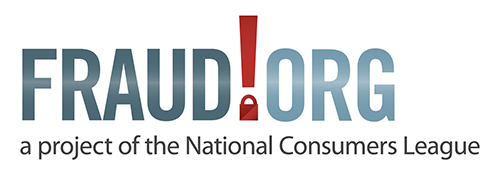Pay up or else: Learning to spot ransomware – Fraud.org
What would you do if you suddenly were unable to access your treasured family photos, work documents, music collection, or other important files on your computer? What if you knew that you could lose them permanently unless you paid a hacker hundreds or thousands of dollars to unlock the files? Would you pay to get your files back?
Few things are more unsettling than watching a computer hacker take over your computer and demanding a ransom. Yet, more and more Americans are faced with these ransom demands as Internet “ransomware” has grown in popularity amongst fraudsters. In the first three months of 2016, cyber criminals have used ransomware to extort $209 million from businesses, schools, governments, and consumers, according to the FBI.
Ransomware can easily be downloaded onto your computer without your knowledge. This can happen through a number of different ways: by clicking on an infected Internet advertisement, opening an infected email, or by visiting a suspicious website.
Once the infected file is secretly installed, the software will begin encrypting your computer files. Hackers use advanced forms of encryption so that computer professionals have no way to decrypt an infected computer. Once the hacker has successfully encrypted your computer, it will lock up and a screen will pop up demanding a ransom. The scammer may demand payment via a virtual currency like Bitcoin, a wire transfer, or by some other payment method. Failure to pay in a set amount of time can result in the hacker deleting the key necessary to unlock your files. Then, your files would become permanently inaccessible.
Ransomware has serious real-world implications. Ransomware attacks on several hospitals including Medstar Health, Hollywood Presbyterian, and Kentucky-based Methodist Hospital prevented access to patients’ medical records. Hospitals had to revert back to paper record keeping and many patients in need of care had to be turned away until the ransom was paid or until they were able to relaunch their system. Similar attacks have taken place at other health centers, schools across the country, and even in the U.S. House of Representatives.
Basic steps to protect yourself from a ransomware attack:
-
Backup your important files on a regular basis. That way, if your computer does get hacked, you have a way to recover your important files without paying the ransom.
-
Do not click on suspicious links or attachments in emails.
-
Use reputable security software, which can help prevent you from visiting many malicious websites as well as help identify infected email attachments.
-
If you believe that you may have clicked an infected link, immediately turn your computer off. Although this will not always prevent the spread of ransomware amongst your computer files, it will sometimes prevent the hacker from being able to encrypt your computer.
Unfortunately, you can never be fully protected from ransomware. If you happen to become a victim, never pay the demanded ransom because you can not be sure that the hacker will give you the key to decrypt your data. In addition, by paying the ransom, you will embolden the hacker to continue their operations, and will encourage other hackers to undertake ransomware operations of their own.
Have you been a victim of a ransomware attack? We want to know! You can file a complaint at Fraud.org via our secure online complaint form. We’ll share your complaint with our network of more than 90 law enforcement and consumer protection agency partners who can and do put fraudsters behind bars.







